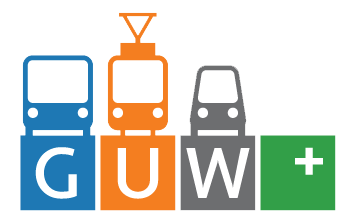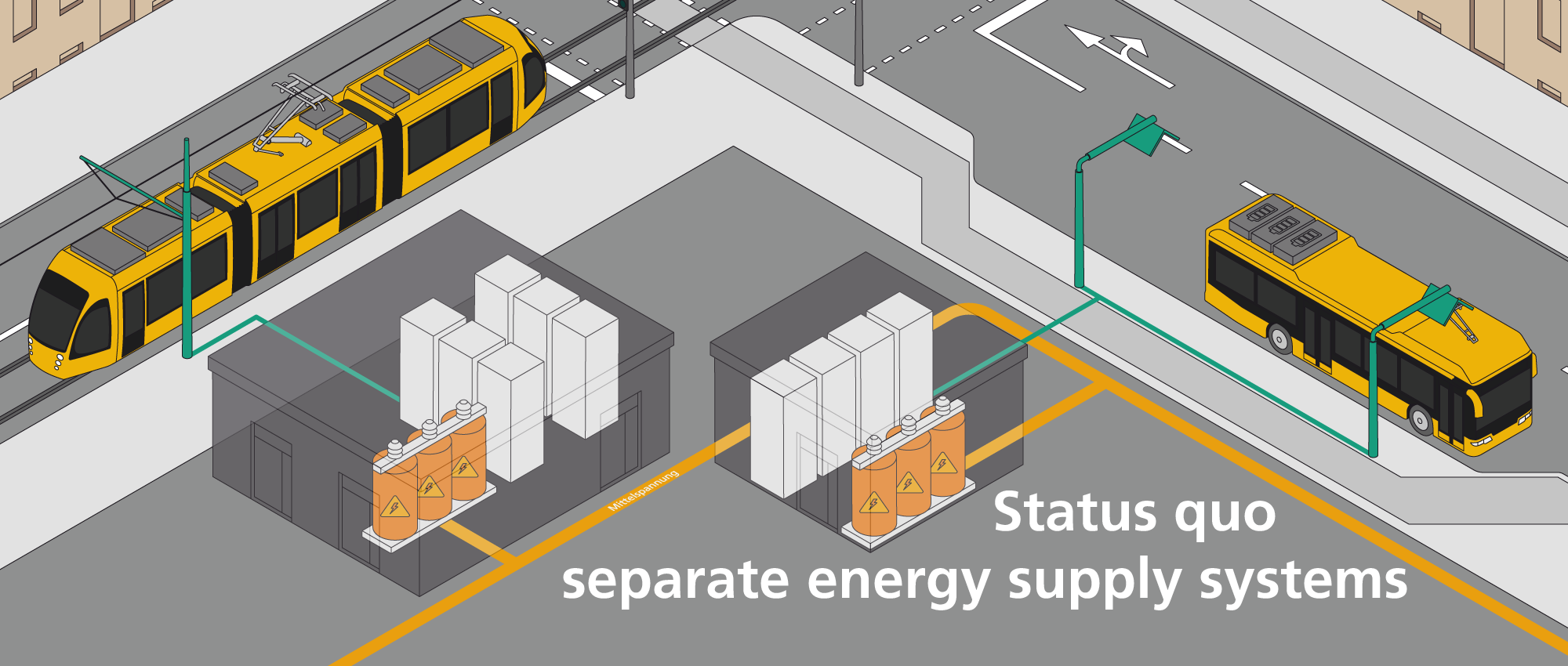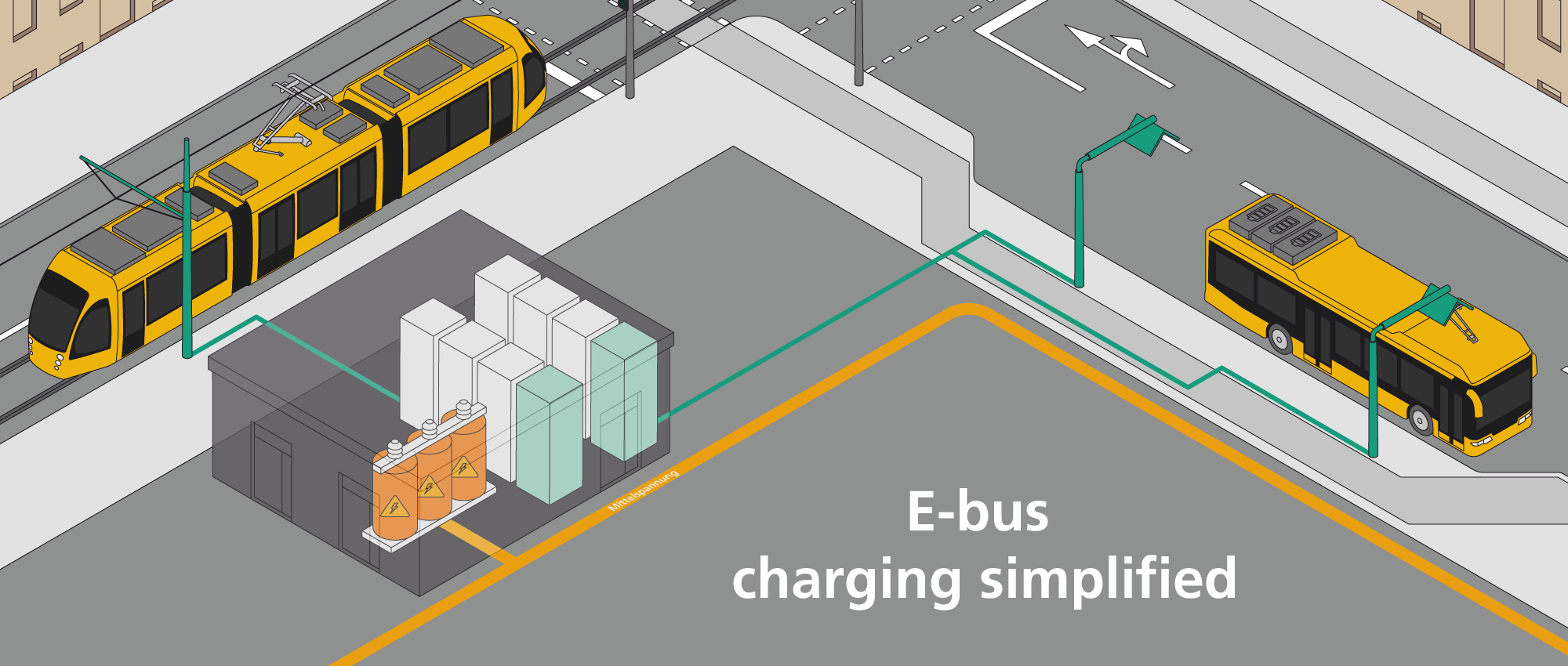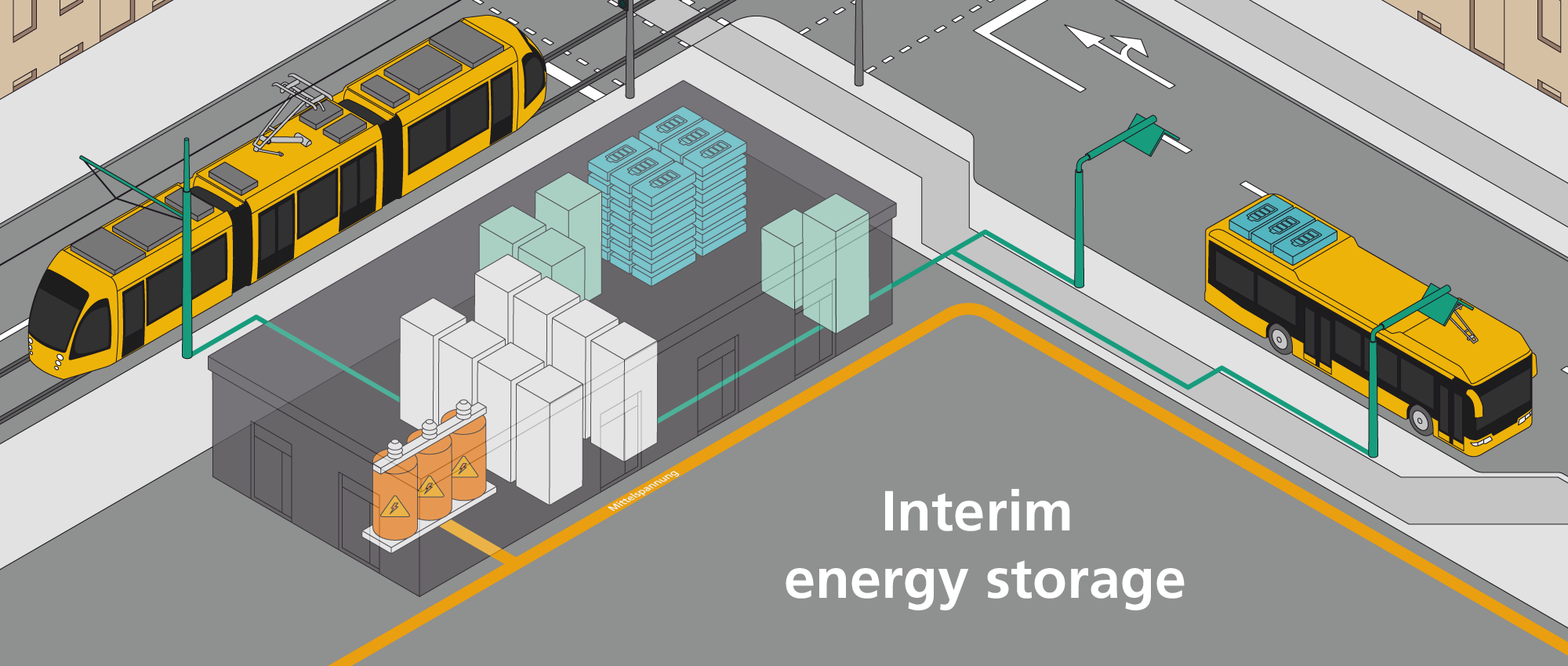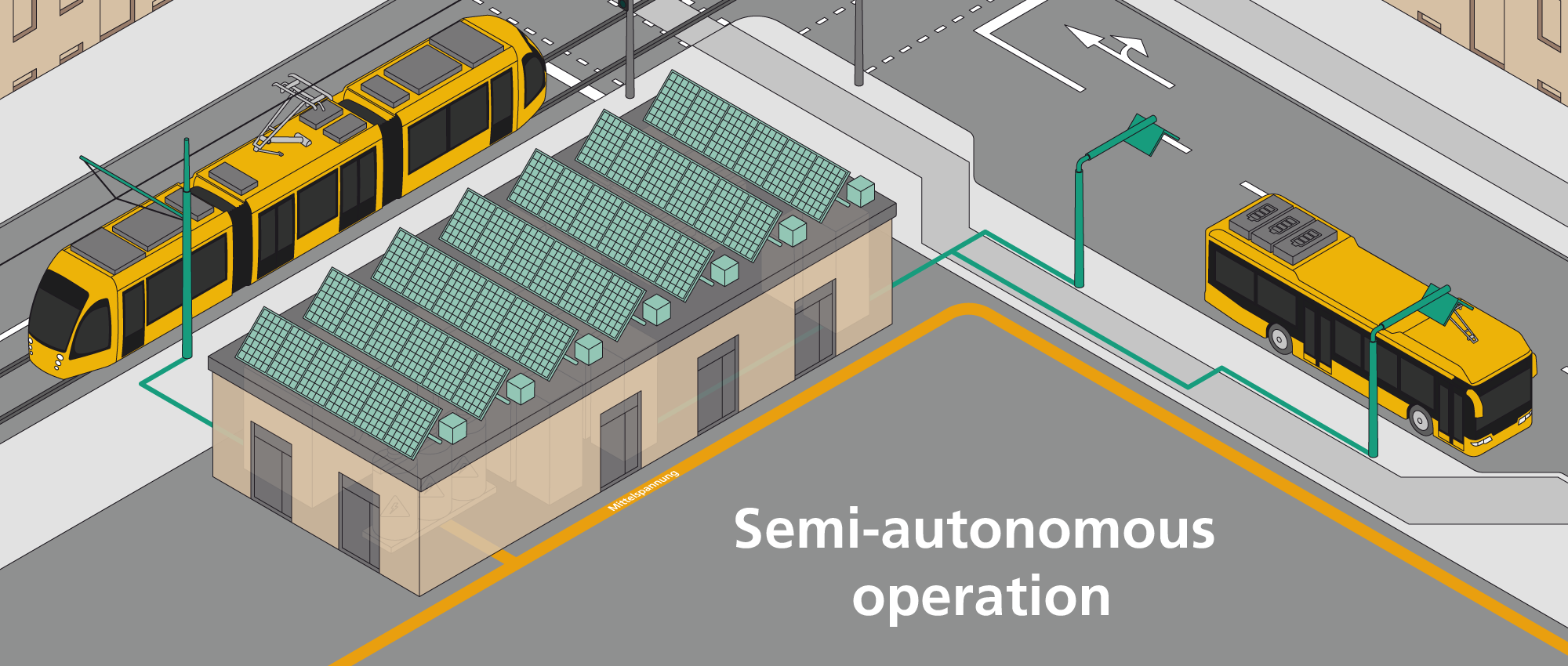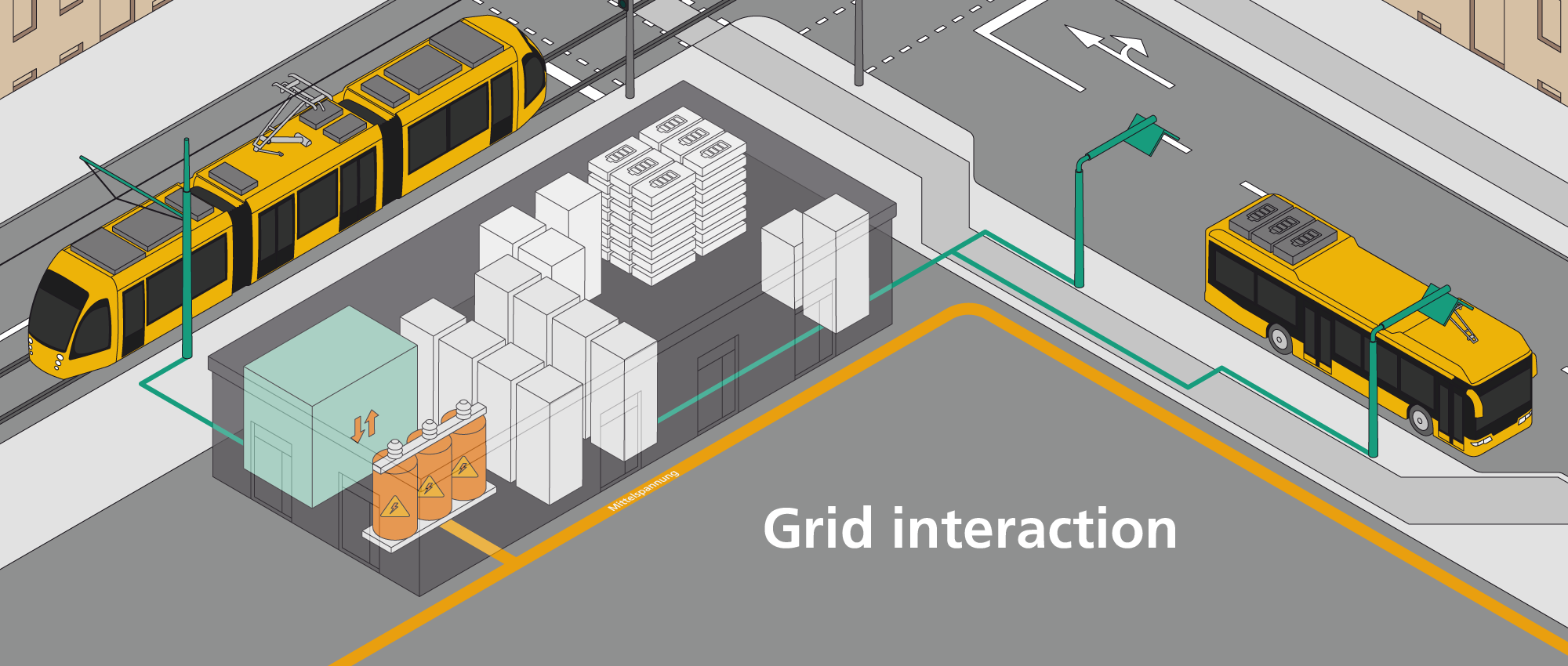GUW+ combines the existing energy supply infrastructure for light rail and tram systems with charging stations for e-buses, thus promoting their implementation in public transport operations. Further potential can be leveraged by adding modular components to GUW+ depending on the individual locations.
Integration of e-bus charging equipment in a tram operator’s existing substation located in the vicinity of the e-bus charging location
- No new building needed for the bus charging equipment (shared use of the existing substation building), only the erection of charging post(s) required
- No separate grid connection to the medium voltage ring needed (shared use of the substation’s grid connection)
 Our services
Our servicesIntegration of a stationary energy storage unit for extended operating targets
- Cost-efficient way of implementing a 2nd-use application for pre-aged e-bus traction batteries
- Technical feasibility proven (battery modules by Daimler Buses GmbH)
 Our services
Our servicesIntegration of a regenerative energy generation facility (e. g., solar panels on the vehicle depot’s roof)
- Use of climate-neutral electricity generated by own facilities for operational purposes
- Increased self-consumption rate via combination with a battery storage system
 Our services
Our servicesIntegration of a bi-directional grid rectifier
- Additional use of the storage system for trading at the electricity exchange (external services)
- Increased braking energy utilization through high-capacity feedback to the medium voltage grid
- Additional adjustment options for the tram supply network
 Our services
Our services